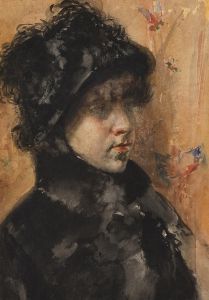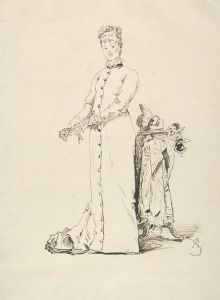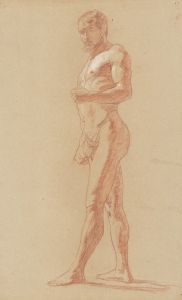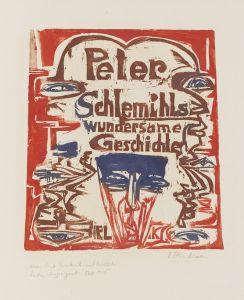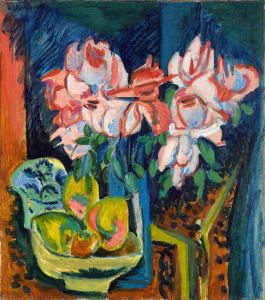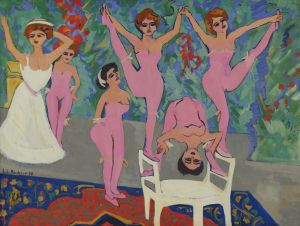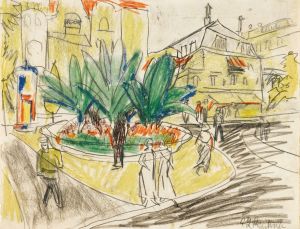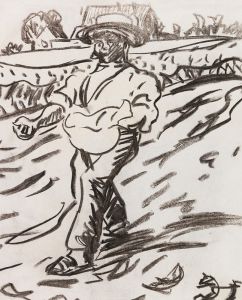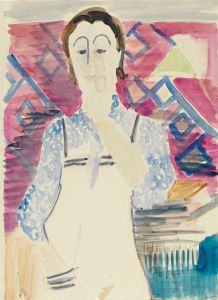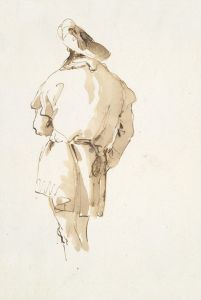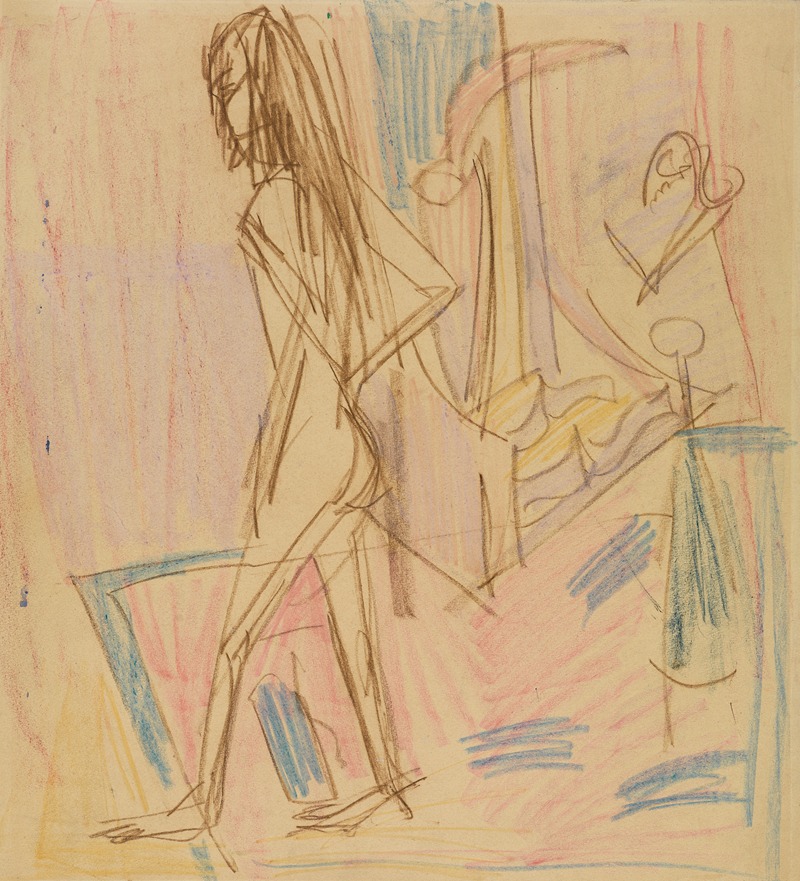
Stehender weiblicher Akt auf Teppich
A hand-painted replica of Ernst Ludwig Kirchner’s masterpiece Stehender weiblicher Akt auf Teppich, meticulously crafted by professional artists to capture the true essence of the original. Each piece is created with museum-quality canvas and rare mineral pigments, carefully painted by experienced artists with delicate brushstrokes and rich, layered colors to perfectly recreate the texture of the original artwork. Unlike machine-printed reproductions, this hand-painted version brings the painting to life, infused with the artist’s emotions and skill in every stroke. Whether for personal collection or home decoration, it instantly elevates the artistic atmosphere of any space.
"Stehender weiblicher Akt auf Teppich" (Standing Female Nude on Carpet) is a painting by the German expressionist artist Ernst Ludwig Kirchner. Created in 1910, this work is a significant example of Kirchner's contribution to the German Expressionist movement and his involvement with the artist group Die Brücke (The Bridge), which he co-founded in 1905.
Ernst Ludwig Kirchner (1880-1938) was a pivotal figure in the early 20th-century art scene, known for his bold use of color, dynamic compositions, and exploration of the human form. His work often reflects the anxieties and dynamism of modern life, as well as a deep interest in non-Western art forms, which he encountered through ethnographic museums and exhibitions.
"Stehender weiblicher Akt auf Teppich" depicts a nude female figure standing on a patterned carpet. The painting is characterized by Kirchner's distinctive style, which includes elongated forms, vibrant colors, and expressive brushstrokes. The figure's pose is both natural and stylized, capturing a sense of immediacy and intimacy. The use of a carpet as a backdrop adds a layer of texture and pattern, enhancing the visual complexity of the composition.
Kirchner's approach to the human figure was heavily influenced by his desire to break away from traditional academic art. He sought to capture the raw, unfiltered essence of his subjects, often using bold lines and exaggerated forms to convey emotion and movement. This painting is a testament to his innovative techniques and his ability to convey a powerful sense of presence and individuality in his subjects.
The context in which Kirchner created this painting is also significant. The early 20th century was a period of rapid change and upheaval in Europe, with industrialization, urbanization, and the lead-up to World War I profoundly impacting society. Artists like Kirchner responded to these changes by seeking new ways to express the human experience, often turning to more abstract and expressive forms of representation.
"Stehender weiblicher Akt auf Teppich" reflects Kirchner's interest in the human body as a site of both beauty and vulnerability. The painting's vibrant colors and dynamic composition convey a sense of energy and vitality, while the figure's nudity and direct gaze invite viewers to engage with the work on a personal and emotional level.
Kirchner's work, including this painting, has had a lasting impact on the development of modern art. His exploration of form, color, and emotion paved the way for future generations of artists, and his contributions to the Expressionist movement continue to be celebrated and studied today.
In summary, "Stehender weiblicher Akt auf Teppich" is a notable work by Ernst Ludwig Kirchner that exemplifies his innovative approach to the human figure and his contributions to the Expressionist movement. The painting's dynamic composition, bold use of color, and expressive style make it a significant piece in the history of modern art.





